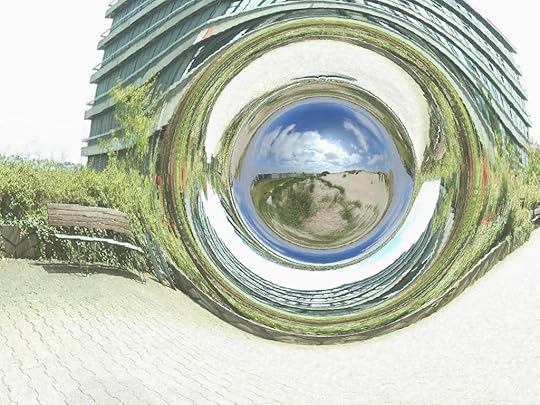Demonstrate, don’t explain

By CorvinZahn – Gallery of Space Time Travel (self-made, panorama of the dunes: Philippe E. Hurbain), CC BY-SA 2.5
You know how people say “show, don’t tell” and when you’re a dewey-eyed newberry dough-writer you take that advice way too seriously and write a 5 billion word novel? And then you get disgusted with showing and your next novel is only 5 words long? Yeah? That’s happened to you?
Well here’s a different spin on the rule that would have saved me a lot of trouble if I’d known it before: demonstrate, don’t explain.
Sometimes you have to tell. Sometimes, you shouldn’t show. But when you’re writing speculative fiction and you’re talking about the central conceit of the whole story, you can’t just explain it. You have to have your characters demonstrate how it works.
Junction is a good example of the good things that happen when you apply this rule and the bad things that happen when you don’t. In Junction, a wormhole at the bottom of a pit in the New Guinea Highlands connects to a wormhole at the top of a mound on an alien planet. That’s it. I just explained it.
I used basically the same words in the manuscript. I used them over and over again, in several different places, both as internal and external dialogue. And a whole bunch of beta-readers were STILL confused. “What is that thing at the bottom of the pit?” they would ask, “where is the wormhole?” “why was it in a pit a moment ago and now its on a mound?” “What planet are we on?”
These weren’t stupid questions. I have the same problem reading other people’s work because (guess what) explanations are boring and my eyes just glaze over them. It doesn’t matter if the author repeats the explanation. That just makes it more boring. Even when I do register the explanation, my own presuppositions get in the way. “No,” I say, “wormholes don’t work like that. That character explaining them must be wrong.”
On the other hand, something nobody had any trouble with in Junction was alien biology. When the semipermeable-bag-within-a-silicone-bag-within-a-layer-of-hydrochloric-acid-within-a-second-silicone-bag-pierced-by-silicious-spicules showed up, nobody had any problem with it. That’s because I first had my heroes look out at a landscape covered in glass, then see a little rolling animal that’s build a glass shell around itself, then a larger animal that has broken the shell up into glass spines embedded in a tough layer of silicone, then the big animal, whose first action is to attack another animal and eat it. My readers knew exactly what that thing was (a bag of acid covered in glass shards) and what it was going to do (try to eat them). Bam.
That’s demonstrating. That’s making people believe you. So I’m going to go back and demonstrate the hell out of those wormholes.




